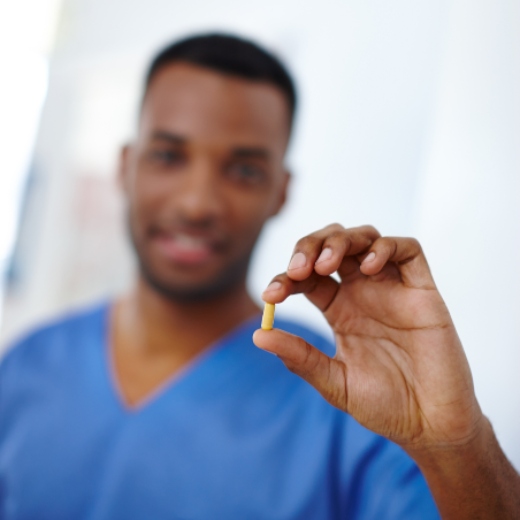The fact that you still have the energy to research and land on this page means only one thing: the Vitamin B in your body has successfully converted your food intake into glucose allowing you to spare some energy to do the things that you wanted to do.
Niacin, or more commonly known as Vitamin B3, is an important nutrient that allows your body to function properly. But aside from these important functions, what does niacin do? What is niacin good for?
What is Niacin?
Often identified as part of the daily multivitamin, Niacin (or Nicotinic Acid) plays an important role in maintaining the cellular metabolism and respiration of the body.1 This helps keep several systems of the body healthy – including the nervous, digestive, and skin. This is such an important B vitamin that according to research: the deficiency of such may manifest with several psychiatric manifestations.2
For this reason, many individuals make sure to include this in their daily multivitamin – although most people can get enough niacin from food. As a treatment, niacin is also used to address concerns on elevated LDL cholesterol, elevated non-HDL cholesterol, elevated triglycerides, elevated lipoprotein(a), and reduced HDL cholesterol.3
What Does Niacin Do?
Niacin is usually absorbed by the body when dissolved in water and taken orally. Aside from the functions mentioned above, it is also necessary for the proper production of fats and sugars, as well as in maintaining healthy cells in the body. In the central nervous system, it has been recognized as the key mediator for neuronal development and survival.4
While niacin deficiency is rare these days because it is found in many foods (like red meat, poultry, fish, brown rice, nuts, legumes, and the like), there are some people who develop pellagra. This disease is a severe case of niacin deficiency that is often characterized by diarrhea, dermatitis, dementia, and death.5 Apart from nutritional deficiency, other causes that can lead to the development of pellagra include chronic alcoholism, gastrointestinal malabsorption, and some medications.6
How to Take Niacin?
Aside from food, niacin is also available in supplement forms. These are often taken by those with deficiencies while others recommend this to those with high cholesterol and heart diseases.
While niacin supplements are readily available over-the-counter, because of possible interactions with other medications taken, it is highly recommended to take these dietary supplements under the supervision of a healthcare provider.
Where to Get the Best Dietary Supplement?
The Omnium Group is the leading manufacturer of supplements, nutraceuticals, cannabinoids, gummies, cosmetic, skincare, and OTC industries in Riverside and San Bernardino Valley, California. We provide high-quality co-packing and bulk supply services with the use of our high-speed equipment and new packaging technology. Our FDA-registered facilities can handle label creation, printing, label application, shrink wrapping, and outer packaging services.
We are registered under NSF International, Cruelty-free International, and USDA Organic. If you are planning to start your own brand of dietary supplements, we would be happy to create custom formulation and develop products that would cater to your specifications. Contact us now and allow our team of experienced chemists and technicians to bring to life your dream products.
References:
1 Kirkland JB, Meyer-Ficca ML. Niacin. Adv Food Nutr Res. 2018;83:83-149. DOI: 10.1016/bs.afnr.2017.11.003. Epub 2018 Feb 1. PMID: 29477227.
2 Xu XJ, Jiang GS. A niacin-respondent subset of schizophrenia – a therapeutic review. Eur Rev Med Pharmacol Sci. 2015;19(6):988-97. PMID: 25855923.
3 Julius U. Niacin as an antidyslipidemic drug. Can J Physiol Pharmacol. 2015 Dec;93(12):1043-54. DOI: 10.1139/cjpp-2014-0478. Epub 2015 Apr 28. PMID: 26370906.
4 Gasperi V, Sibilano M, Savini I, Catani MV. Niacin in the Central Nervous System: An Update of Biological Aspects and Clinical Applications. Int J Mol Sci. 2019 Feb 23;20(4):974. DOI: 10.3390/ijms20040974. PMID: 30813414; PMCID: PMC6412771.
5 Hegyi J, Schwartz RA, Hegyi V. Pellagra: dermatitis, dementia, and diarrhea. Int J Dermatol. 2004 Jan;43(1):1-5. DOI: 10.1111/j.1365-4632.2004.01959.x. PMID: 14693013.
6 Pitche PT. Pellagre et érythèmes pellagroïdes [Pellagra]. Sante. 2005 Jul-Sep;15(3):205-8. French. PMID: 16207585.
